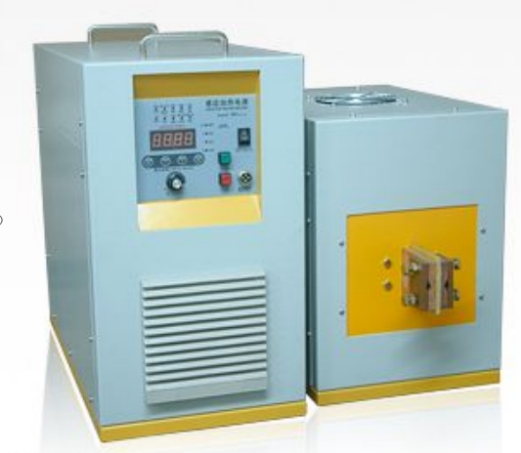- 17
- Oct
The difference between high frequency quenching and intermediate frequency quenching
The difference between high frequency quenching and intermediate frequency quenching
1. What is induction hardening
Most high-frequency quenching is used for surface quenching of industrial metal parts. It is a metal heat treatment method that generates a certain induction current on the surface of the workpiece, rapidly heats the surface of the part, and then quenches it quickly.
Second, what is intermediate frequency quenching
Intermediate frequency quenching is to put metal parts in an induction coil, the induction coil is energized to generate an alternating electromagnetic field, and an alternating current is induced in the metal part. Due to the skin effect, the current is mainly concentrated on the surface of the metal part, so the surface temperature The highest is the water spray cooling or other cooling immediately below the induction coil. Since the heating and cooling are mainly concentrated on the surface, the surface modification is obvious, while the internal modification is basically not, and it can have a very special heat treatment effect.
Three, the difference between high-frequency quenching and medium-frequency quenching
High-frequency quenching and medium-frequency quenching are both a kind of surface heat treatment technology. They both use high-frequency (or medium-frequency, power-frequency) induction current to rapidly heat the surface of steel parts and then immediately cool it down.
The working principle of high-frequency hardening is the same as that of medium-frequency hardening, which is the principle of induction heating: that is, the workpiece is placed in the inductor, which is generally a hollow copper tube with medium-frequency or high-frequency alternating current (1000-300000Hz or higher). The alternating magnetic field generates an induced current of the same frequency in the workpiece. The distribution of this induced current on the workpiece is uneven. It is strong on the surface but weak on the inside. It is close to 0 to the core. Use this skin effect , The surface of the workpiece can be heated quickly, and the surface temperature will rise to 800-1000℃ within a few seconds, while the temperature of the core will increase very little
However, during the heating process, the distribution of the induced current in the workpiece is not uniform, and the heating effect produced by different current frequencies is also different:
1. High-frequency quenching
Current frequency is 100~500 kHz
Shallow hardened layer (1.5~2mm)
High hardness
The workpiece is not easy to oxidize
Small deformation
Good quenching quality
high productivity
Suitable for parts that work under friction conditions, such as generally small gears and shafts (the materials used are 45# steel, 40Cr)
2. Intermediate frequency quenching
Current frequency is 500~10000 Hz
Deep hardened layer (3~5mm)
Suitable for parts subject to torsion and pressure load, such as crankshafts, large gears, grinding machine spindles, etc. (The materials used are 45 steel, 40Cr, 9Mn2V and ductile
In short, the biggest difference between high frequency quenching and intermediate frequency quenching is the difference in heating thickness. High frequency quenching can harden the surface in a short time. The crystal structure is very fine and the structural deformation is small. The intermediate frequency surface stress is smaller than that of high frequency. .

